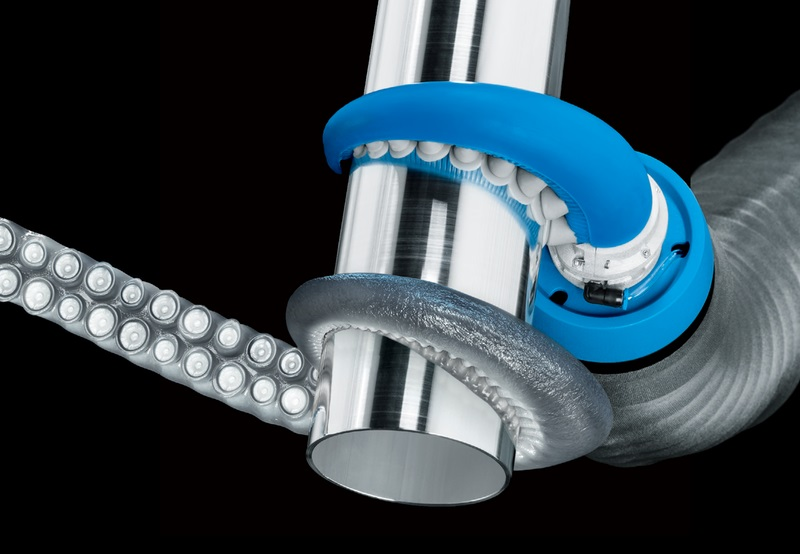Feb 28 2020
Octopuses have a lot of cool things to boast about, and their arms could be the coolest of all.
 Researchers have developed an octopus-inspired robot can grip, move, and manipulate a wide range of objects. Image Credit: Elias Knubben, Zhexin Xie, August Domel, and Li Wen.
Researchers have developed an octopus-inspired robot can grip, move, and manipulate a wide range of objects. Image Credit: Elias Knubben, Zhexin Xie, August Domel, and Li Wen.
Two-thirds of neurons of an octopus are in its arms, implying that each arm literally includes its own mind. The arms of an octopus have the ability to open childproof bottles, untie knots, and wrap around a prey of any size or shape. The arms are provided with hundreds of suckers that can act as strong seals even on coarse surfaces underwater.
What if a robot has the ability to perform all such actions?
At the Harvard John A. Paulson School of Engineering and Applied Sciences (SEAS) and Beihang University, scientists have created an octopus-inspired soft robotic arm with the ability to grip, move, and handle an extensive array of objects. It has a tapered, flexible design, filled with suction cups, which offer the gripper a firm hold on objects of all sizes, textures, and shapes—ranging from eggs, iPhones, to large exercise balls.
Most previous research on octopus-inspired robots focused either on mimicking the suction or the movement of the arm, but not both. Our research is the first to quantify the tapering angles of the arms and the combined functions of bending and suction, which allows for a single small gripper to be used for a wide range of objects that would otherwise require the use of multiple grippers.
August Domel, Study Co-First Author, Harvard SEAS
Domel is a recent PhD graduate of Harvard. The study was reported in the Soft Robotics journal.
The scientists started by investigating the tapering angle of the arms of a real octopus and evaluating the design for bending and grabbing objects that would turn out to be the best for a soft robot. Then, they analyzed the structure and layout of the suckers (which is exactly the scientific term) and integrated them into the design.
We mimicked the general structure and distribution of these suckers for our soft actuators. Although our design is much simpler than its biological counterpart, these vacuum-based biomimetic suckers can attach to almost any object.
Zhexin Xie, Study Co-First Author and PhD student, Beihang University
Xie is the co-inventor of the Festo Tentacle Gripper, the first-ever fully unified application of this technology in a commercial prototype.
Two valves are used by the researchers to control the arm—one applies the pressure needed to bend the arm, and the other one for a vacuum operation to engage the suckers. The pressure and vacuum can be changed to enable the arm to attach itself to an object, wrap around it, lift it, and release it.
The device has been successfully tested by the team on several different objects, such as eggs, coffee mugs, thin plastic sheets, test tubes, and even live crabs. With the tapering, the arm was also able to squeeze into restricted spaces to retrieve objects.
The results from our study not only provide new insights into the creation of next-generation soft robotic actuators for gripping a wide range of morphologically diverse objects, but also contribute to our understanding of the functional significance of arm taper angle variability across octopus species.
Katia Bertoldi, Study Co-Senior Author, William and Ami Kuan Danoff Professor of Applied Mechanics, Harvard SEAS
Other co-authors of the study include Ning An, Connor Green, Zheyuan Gong, Tianmiao Wang, Elias M. Knubben, James C. Weaver, and Li Wen. The study was partially supported by the National Science Foundation under grant DMREF-1533985 and Festo Corporate’s project division.
Octopus-inspired soft robot
The soft robot is controlled with two valves, one to apply pressure for bending the arm and one for a vacuum that engages the suckers. By changing the pressure and vacuum, the arm can attach to any object, wrap around it, carry it, and release it. Video Credit: Bertoldi Lab/Harvard SEAS.